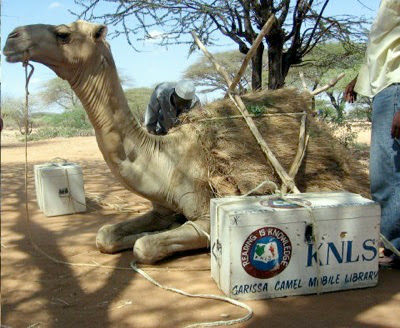Food, water and shelter are inarguably the three basic necessities of life, but Reading is the Number 1 essential for living. Why? Because the ability to read leads to the power to accomplish anything else that people deem crucial to a life worth living.
To Danny Brassell, one of my LinkedIn connections, reading is not only fundamental but is the essence of life. An educator who has inspired learners from grades k- College, he is also a writer, a Literacy Volunteer Trainer, a Coach and a Lecturer. Fortified with all of the knowledge that he has gleaned from his education as well as from teaching, colleagues and life, he now offers professional development presentations to all groups with a passion for education on how to “...inspire people to read, lead and succeed,” (Danny Brassell LinkedIn Summary). His passion-his focus- his raison d’etre- is to inspire all people, especially children to read, read, read. He says, “It’s not what you read (that is important), but how much you read.”
In the Washington Post on Saturday, July 27, 2013,
Oh frabjous day! Callooh! Callay!” (Jabberwocky Lewis Carroll), book bouquets to fill summer days!
When I was a child, I read a novel where a book mobile traveled around rural American areas nourishing hungry minds with mystery, intrigue, romance, and tales of daring do. Oh, how I wished that I could climb into a bus converted to a library, even though I lived no more than a ten minute walk (or a six minute jog, depending on my mood) from the community library in Indiana, PA. Maybe the driver would forget I was there while he/she traversed paths less traveled by me as I lost myself in book after book.
Every time my husband was transferred, leading to yet another search for our town, two of our main requirements were: a library and a bookstore bursting with books. As soon as Kimberly was old enough to sit on the floor and leaf through picture books, I introduced her to the Monday Library Jaunts that I had instigated for myself when I was eight or nine.
Every Monday, after lengthy searches through the rows of books, my daughter and I would stack the stroller with a plethora of reading material-enough, we hoped, to carry us through the week. When Matthew was old enough to hold up his head, he snuggled in the stroller and chewed on one of her hand-me-down Richard Scarry, Berenstain Bear or Maurice Sendak books while Kimberly ambled along beside it with her very first tote bag, one picturing bunnies sitting in a rocking chair reading, slung over her shoulder.
Reading makes everything possible.
Even though my Garmin tells me when and where to turn, I’m really, really thankful that when the policeman blocks my left turn into Nationals Park that I can read road signs that will guide me South and East so I can make that all-important U-Turn leading me to a right turn into Lot F instead of North and West to lost horizons.
Even though my kitchen cabinets hold a variety of ingredients, reading ensures that I will probably turn them into tasty meals and not curdled quiches that bring up mental gross images, ones that sent my family racing for the loaf of Pepperidge Farm Sourdough bread, the jar of Skippy peanut butter and the toaster a few years back. Oops…I shouldn’t have said, “bring up.”
Even though people can and will tell us details about the who, what, when where, why and how factors in
our lives, reading allows us to find out this information for ourselves, to figure out what we think about all of this knowledge and to forge our own plans for dealing with it all.
our lives, reading allows us to find out this information for ourselves, to figure out what we think about all of this knowledge and to forge our own plans for dealing with it all.
Is it any wonder that one of the first demands of dictators is to control what and when people read? Throughout history, books have been burned, banned and barred from public consumption. People have been brutalized, brainwashed and beheaded for owning books.
Tyrants fear the printed page because reading allows people to think, to wonder, to choose, to discover, to compare, to contrast, to mentally escape-to understand what life is all about.
When despots control people’s thinking, minds atrophy, hearts decay and passion disintegrates.
When people choose to do anything but read, minds atrophy, hearts decay and passion disintegrates.
When children aren’t shown the joy the blooms from reading, when they aren’t given opportunities to explore the wonders of their local library, when they aren’t offered a way they can make reading a part of their lives-Summer, Fall, Winter and Spring, their minds will atrophy, their hearts will decay and their passions for life will disintegrate.
When teachers introduce a new piece of literature to study, their announcements shouldn’t be met with groans and rolling eyes, but with open minds and eagerness to open new mental doors.
Food and drink nourish the body. Reading feeds the soul. All three create a life worth living.
Yes, in June I did post a blog, For the best vacation ever- trip the book fantastic. But that was about books... just books. This blog is about reading-reading anything that can be found on a page-be it digital or hard copy.
It’s about reading novels, Facebook statuses, Tweets, non-fiction-narrative, memoirs, how-to books or washing machine manuals.
It’s about reading poetry, text messages, Sports Illustrated, People magazine, emails, recipes on delish.com, a blog on the ten best towns to live in, Northern Virginia Magazine, or a post on the cities with the worst drivers.
It’s about reading a Superman, Wonder Woman or The Far Side comic; details on houses for sale in Scottsdale, Arizona, ocean front rentals on the Outer Banks, resorts in Thailand and the newest best-seller.
It is simply about Reading because you can, not because you have to.
Hooray for the Traveling Trolleys. Hooray for bookmobiles. Hooray for community libraries. May they prosper and proliferate like bunnies across this county, this state, this country, and, oh, why not… the world.

































